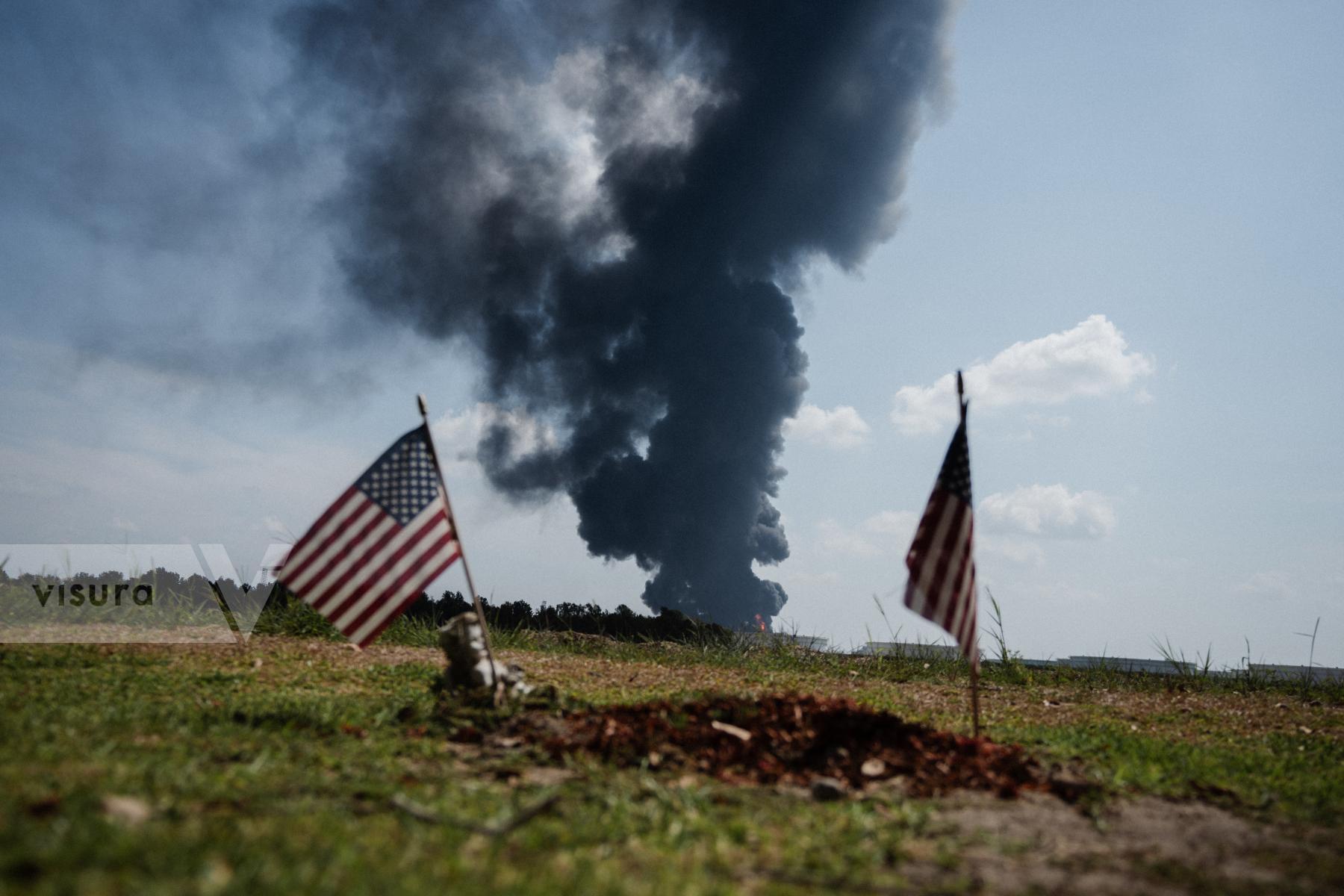
On August, 25th, 2023, a massive column of smoke started to erupt from Marathon Petroleum refinery, in Garyville, LA. Garyville United States

Melvin was a boilermaker for various industries. He was working in chemical tanks, near very hazardous products. He lives on Burton Road in St James, surrounded by tanks. He is very sick. St James United States
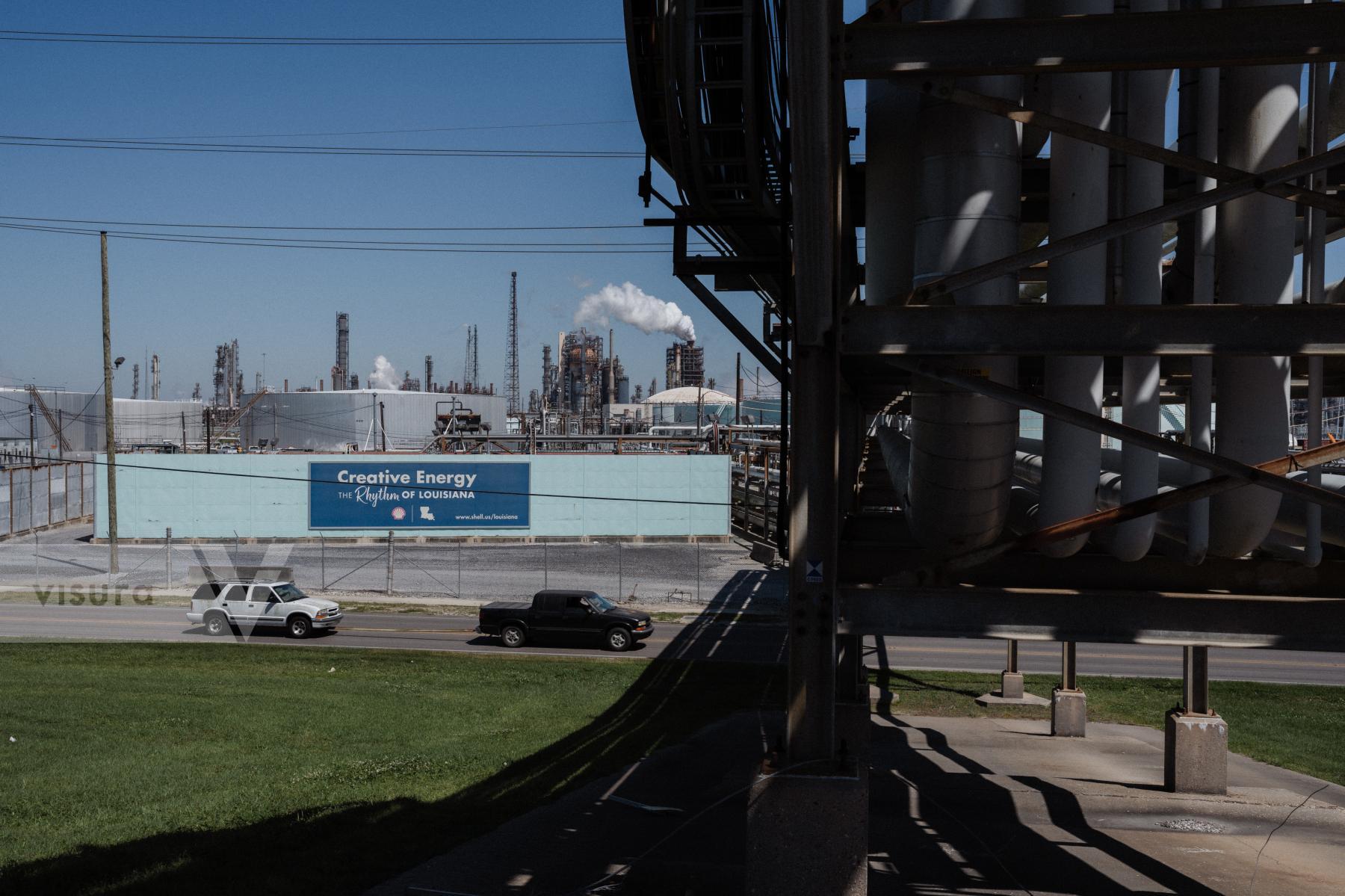
Advertising on a shell refinery plant. Geismar United States
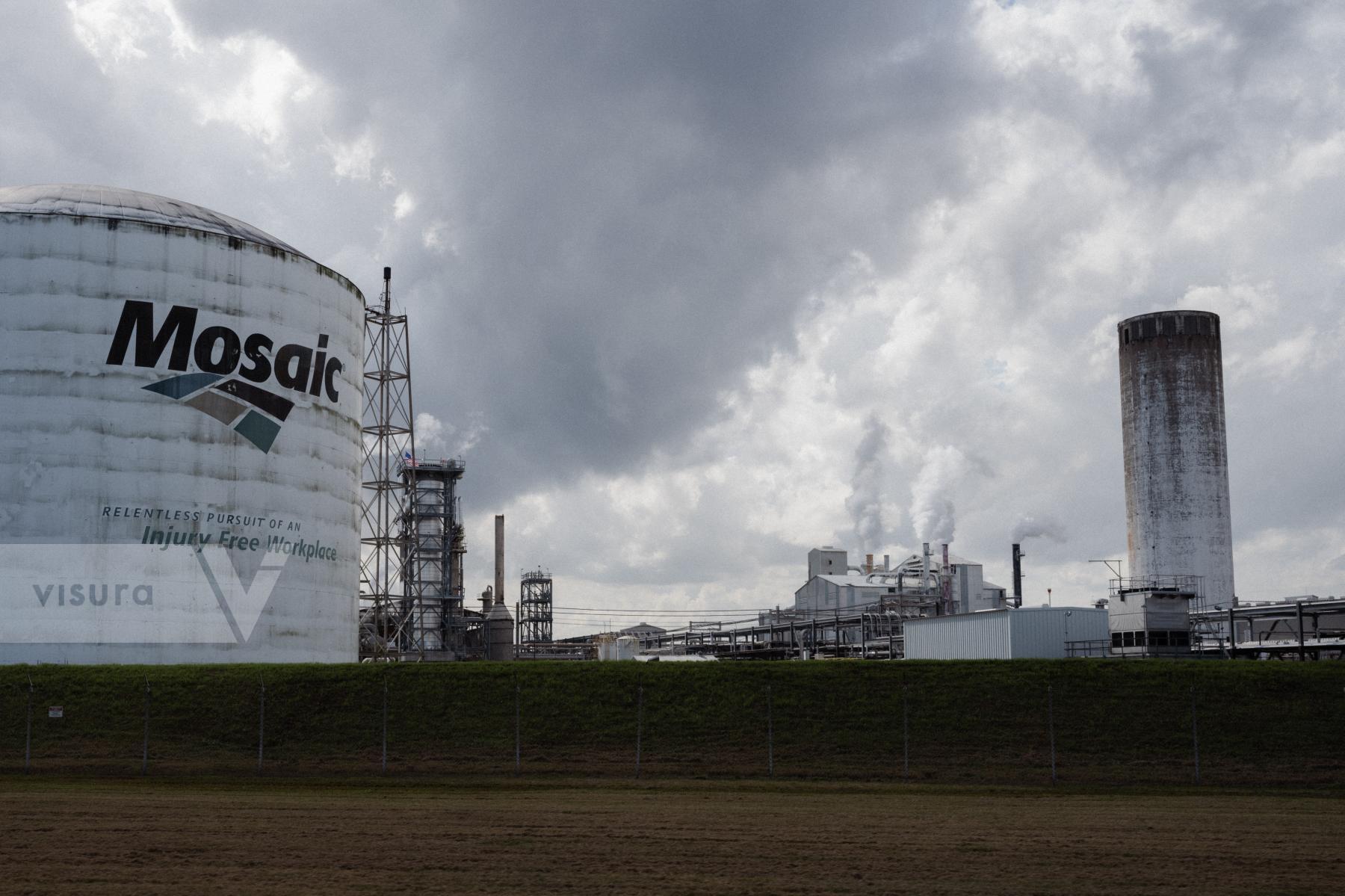
Advertising on a chemical tank by Mosaic Company, producer of concentrated phosphate and potash. Convent United States

A poor African American neighborhood near Marathon Petroleum refinery. Garyville United States

“Blue & Son” is the last grocery store in St James. The surrounding industries have bought out all the others. “Everything has a price. If they want to buy it, I’ll probably sell it.” — Kenneth St James United States

Road toward Donaldsonville, the town with one of the biggest and most polluting refineries of the area: CF Industries. United States

Very few full-time industry jobs are held by local African American residents. Yet jobs were always promised when each new plant is proposed. Donaldsonville United States
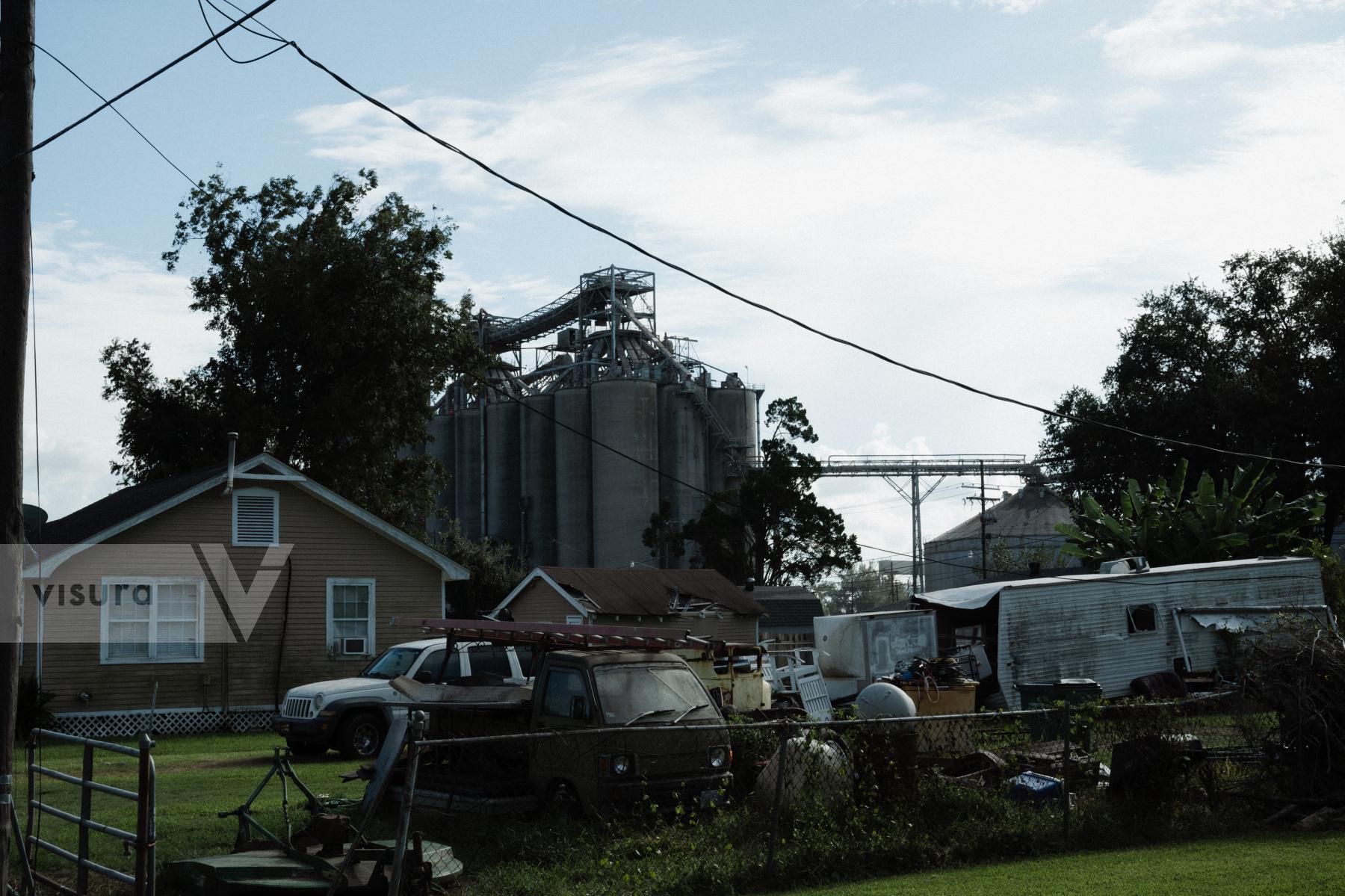
A grain elevator situated in the middle of a neighborhood. Reserve United States

Melvin is pointing a grain elevator. Grain elevators pose life-threatening health and safety consequences, including particulate air pollution, which can lodge deep in the lungs and cause serious health problems. United States
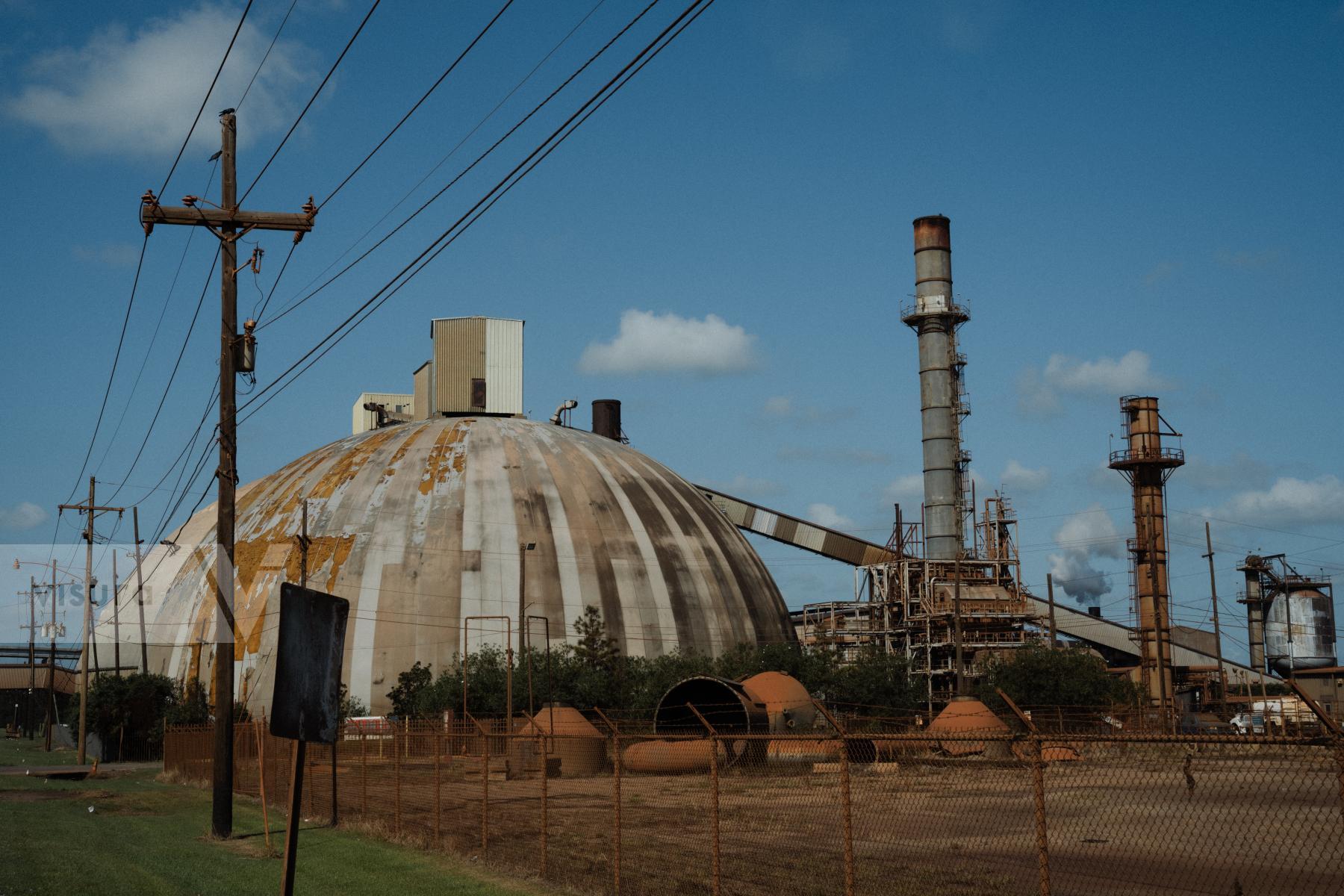
Atalco alumina plant in Gramercy is the last operating alumina refinery in the United States. On January 7th, 2024, five workers were burned by the release of a high pH caustic solution. The plant has had 370 safety violations within the past three years. Gramercy United States

Wallace is a small town of about 755 people. The majority-Black community is divided in half by the Mississippi River. Sugarcane plantations once lined each side of the river. Now, a look at both sides of the river reads like a before and after snapshot. On the west bank (right), sugarcane stalks shoot out of sprawling green fields as far as the eye can see. Small family homes and grand plantation houses that have seen centuries’ worth of births, deaths and memories are sprinkled throughout the never-ending stretches. The cultural landscape is largely intact. The east bank (left) has been taken over by a tangle of metal, concrete and smoke. Layers of rust-colored dust coat everything, including roads, buildings and a once-green welcome sign near Atlantic Alumina Gramercy Operations. Wallace United States

Chloroprene is manufactured by the plant and used in the production of neoprene. It is a known human carcinogen causing respiratory impacts, irritation and burning of eyes and skin, chest pains, neurological symptoms, fatigue, changes in blood cells, reduced blood pressures, increased risk of developing cancer, damages developing fetus, causes spontaneous abortions and interferes with sperm production. In 2016, samples by EPA showed levels exceeding by up to 373 times the comparison level for a 100 in 1 million cancer risk. Denka releases an additional 27 chemicals in the air. Reserve United States

EPA’s air sampling next to the Fifth Ward Elementary School, to monitor the level of chloroprene in the air. Reserve United States
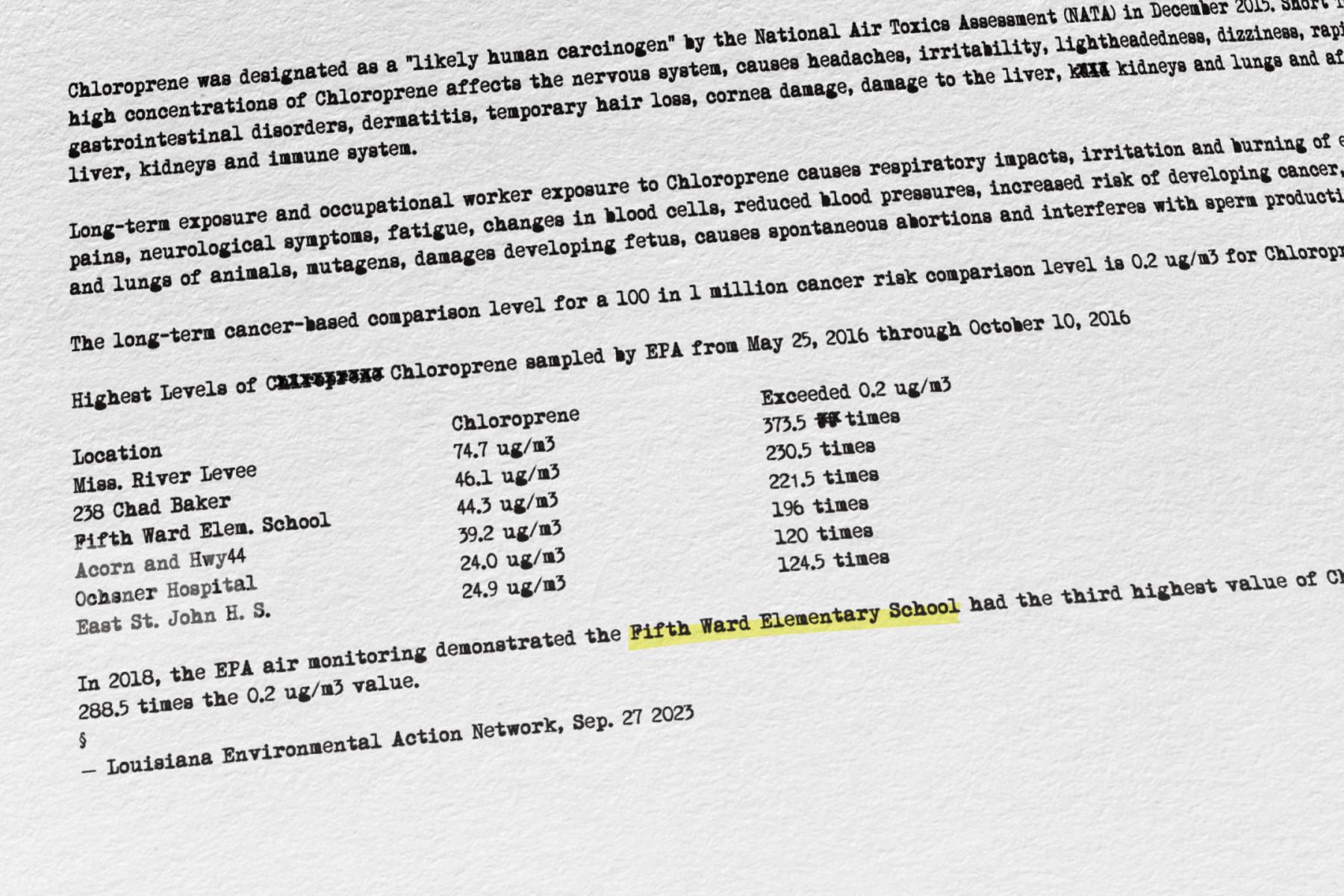
Report from Louisiana Environmental Action Network, dated Sep. 27, 2023. It highlights the risks caused by Denka performance Elastomer and has been distributed to the local residents in order to raise awareness. Reserve United States

The activist and scientist Wilma Subra is trying to get permission to take blood samples from the cows next to Denka Performance Elastomer to prove the risk on humans. Reserve United States

James and his daughter live next to Denka Performance Elastomer. “Do you really think there is something with the air?” — James Reserve United States
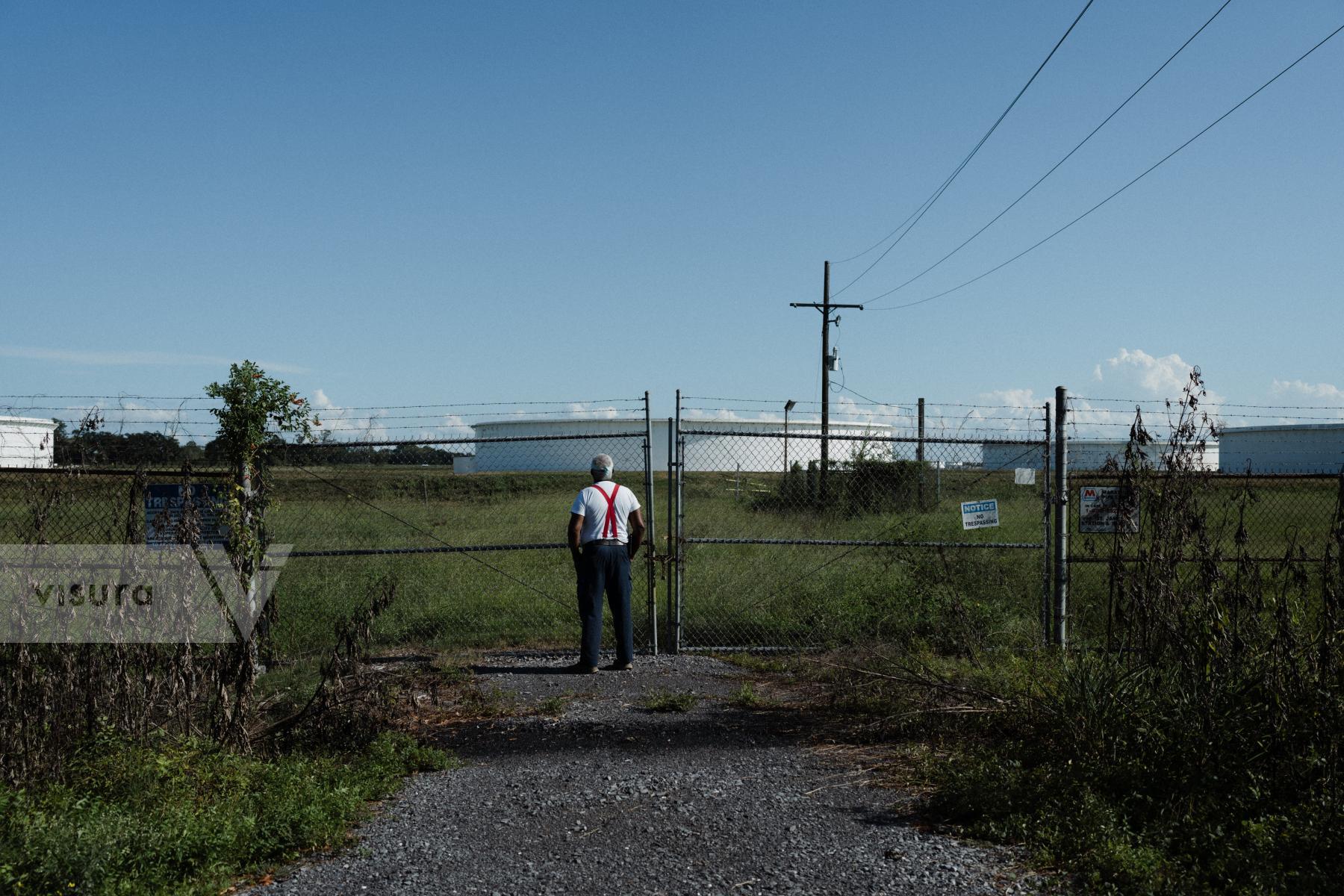
Leroy near the fence separating his house to chemical tanks. Workers came in the 60’s to build the first one. His mother started to cook for them. Then he became a sandblast helper. St James United States

“It was fun. We made good money. Around $12/hr. Until one of the tanks overflowed. It happened a few times until they got caught by EPA. We had a class action suit against them. Everyone got $100.” - Leroy United States

Football practice in Lutcher, LA. Lutcher United States
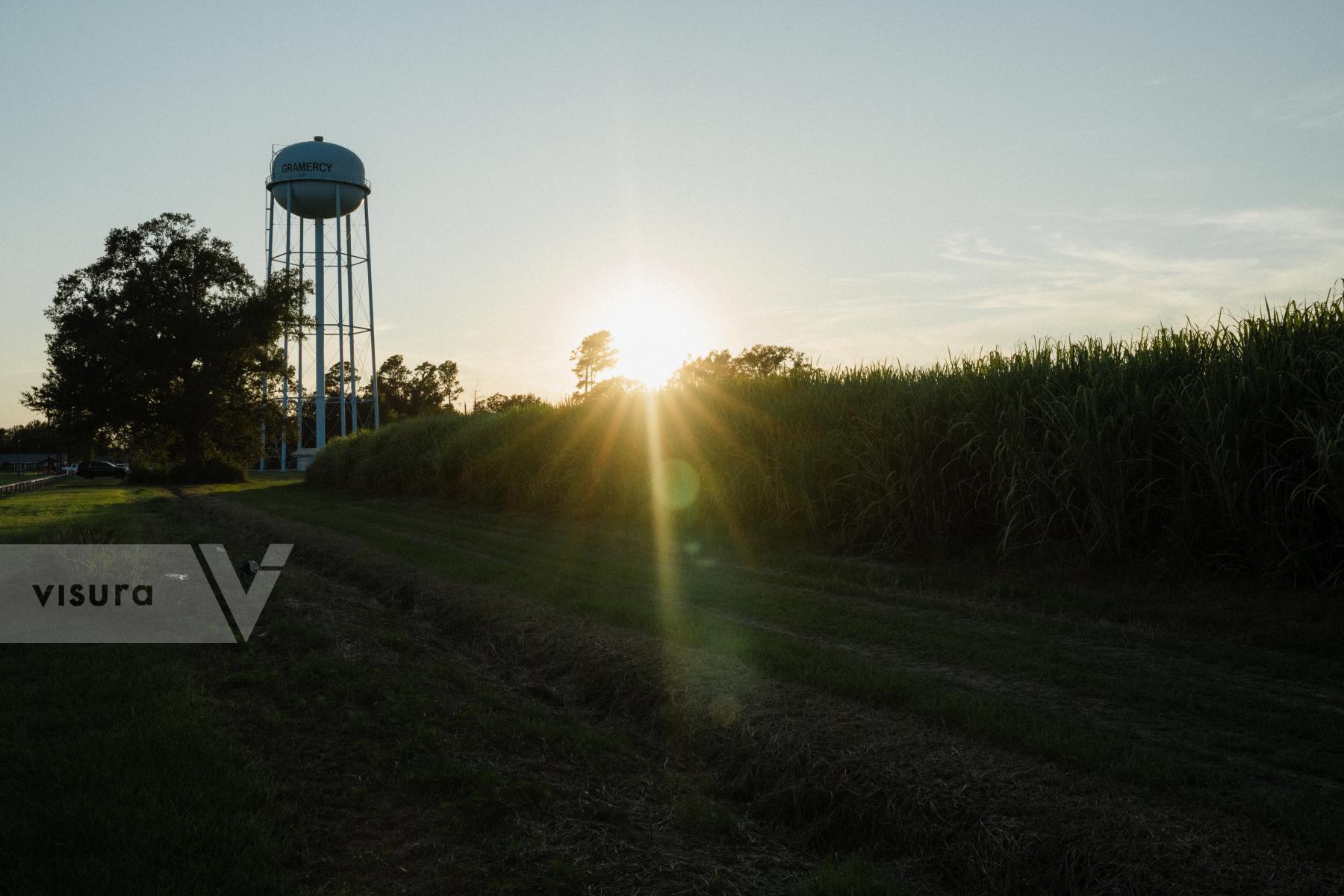
Field near Gramercy Park. Gramercy United States

Poverty rate reaches 22% in St John the Baptist Parish. There are 64.6% of Black of African American residents. Reserve United States

Silhouette of a woman pointing God in the sky. Gramercy United States
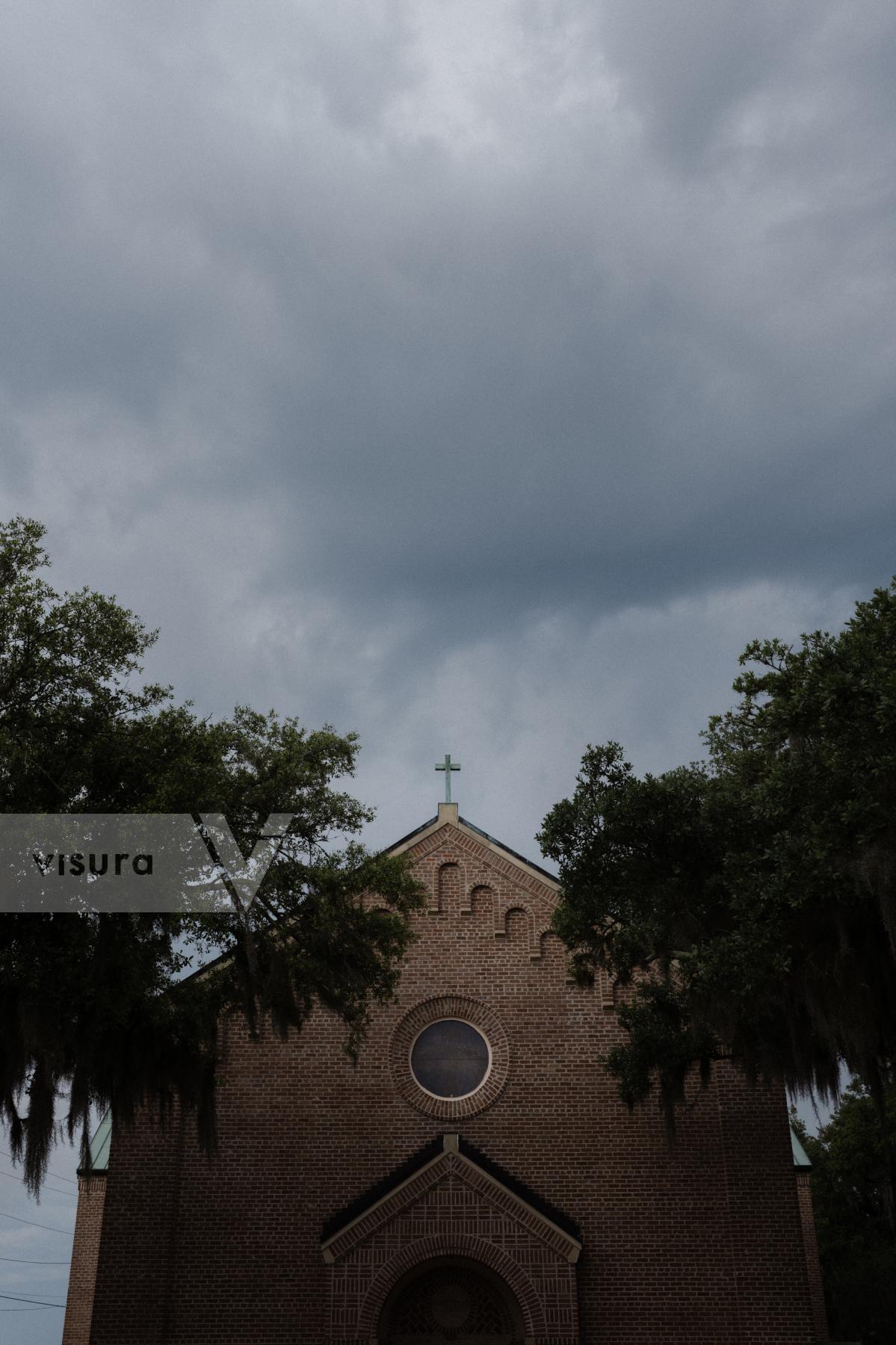
A lot of the local residents rely on churches as a strong community driver. United States

“Every morning, I take my cup of coffee and my pills. Otherwise, I get sore throat and swollen eyes.” — Ali Ali used to work in the tobacco fields. He now works at Whitney Plantation as a staff manager. Edgard United States

Freight train leaving a facility with chemicals. Donaldsonville United States
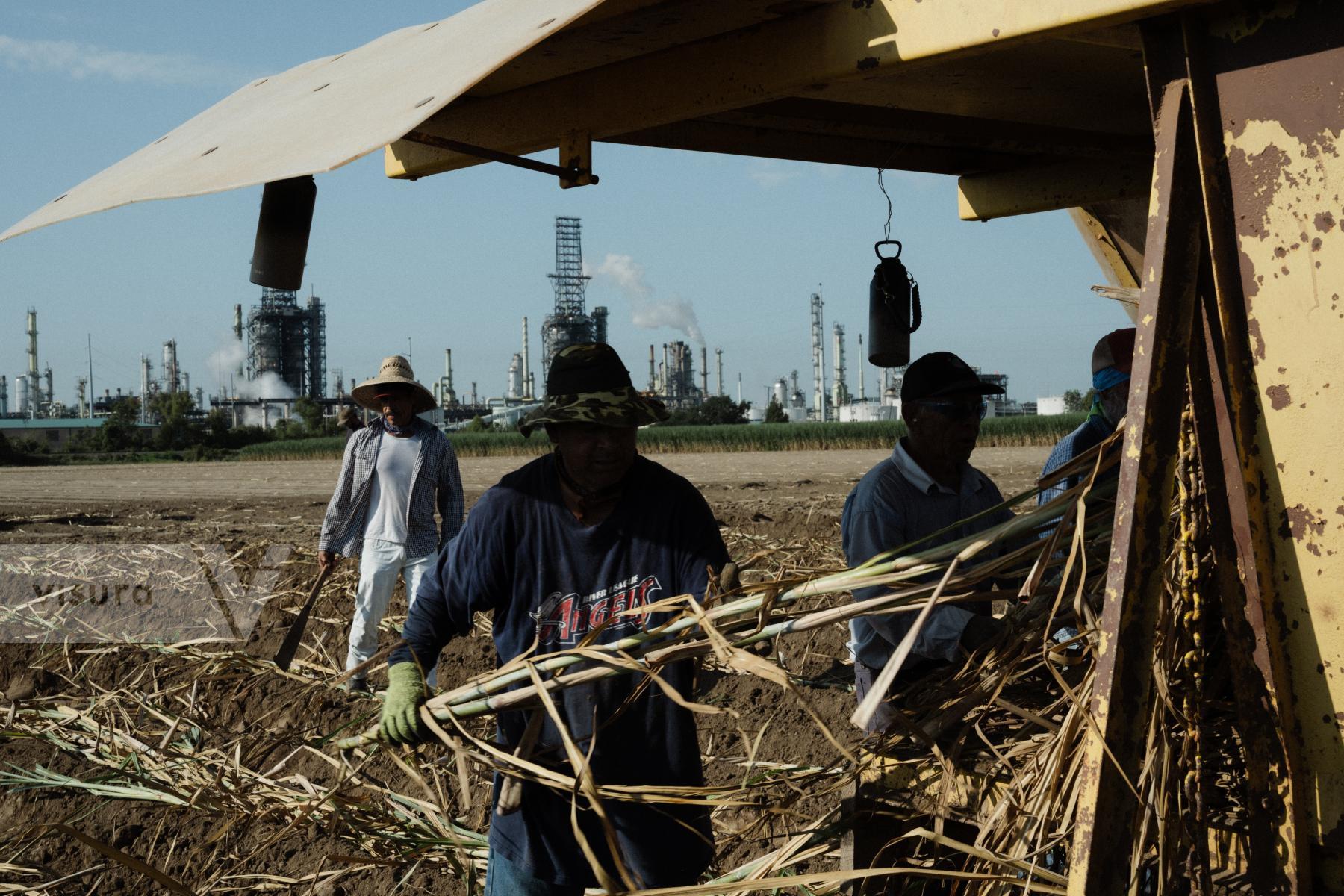
Sugar cane planting behind Marathon Refinery. Many African-American residents are descendants of slaves. This area was once dominated by vast plantations, now replaced by plants. Sugar cane was the first ever polluter. Refineries were located close to the slaves' cabins. Garyville United States
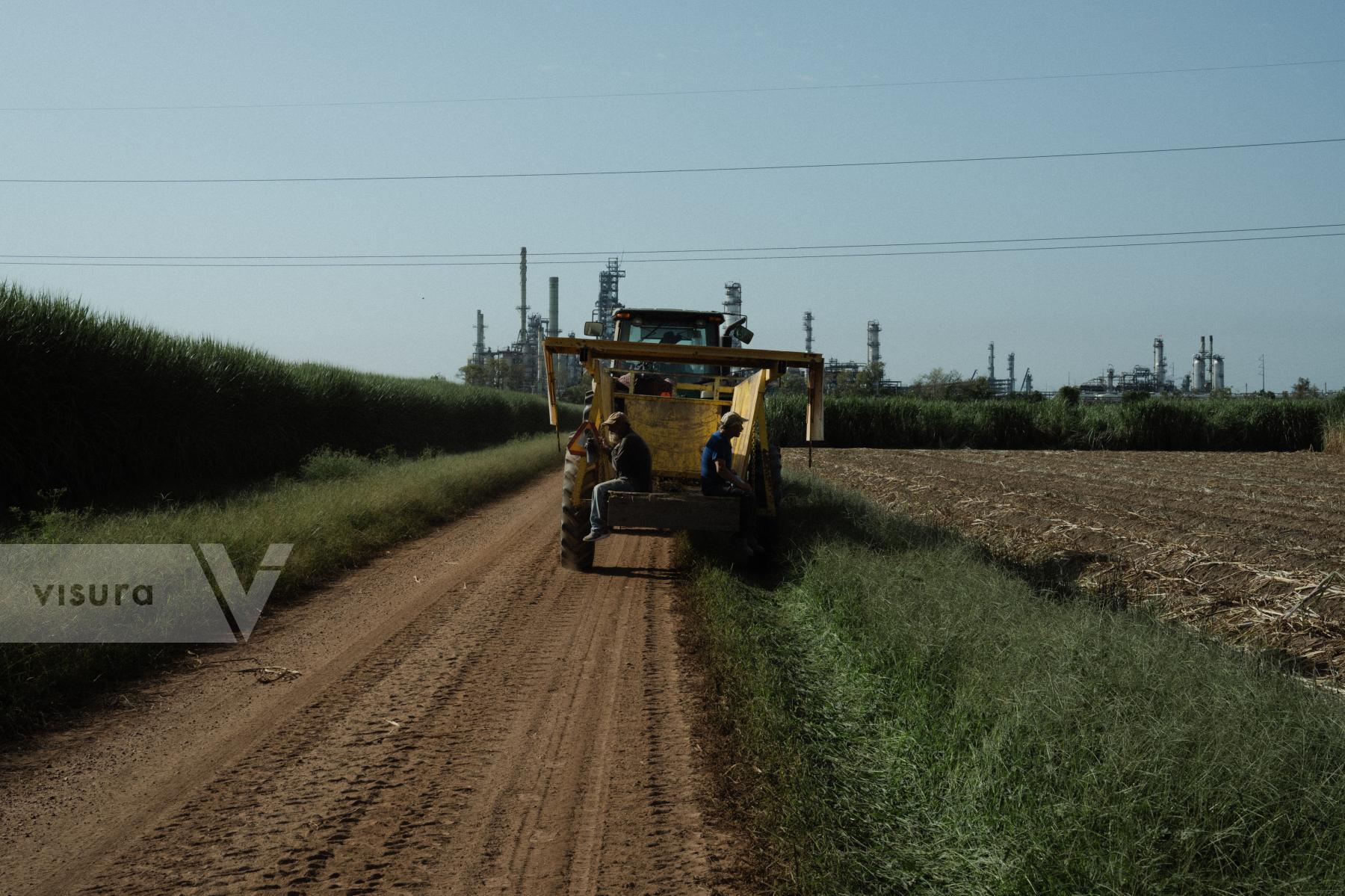
Sugar cane planting behind Marathon Refinery. Many African-American residents are descendants of slaves. This area was once dominated by vast plantations, now replaced by plants.
Garyville, LA. Garyville United States
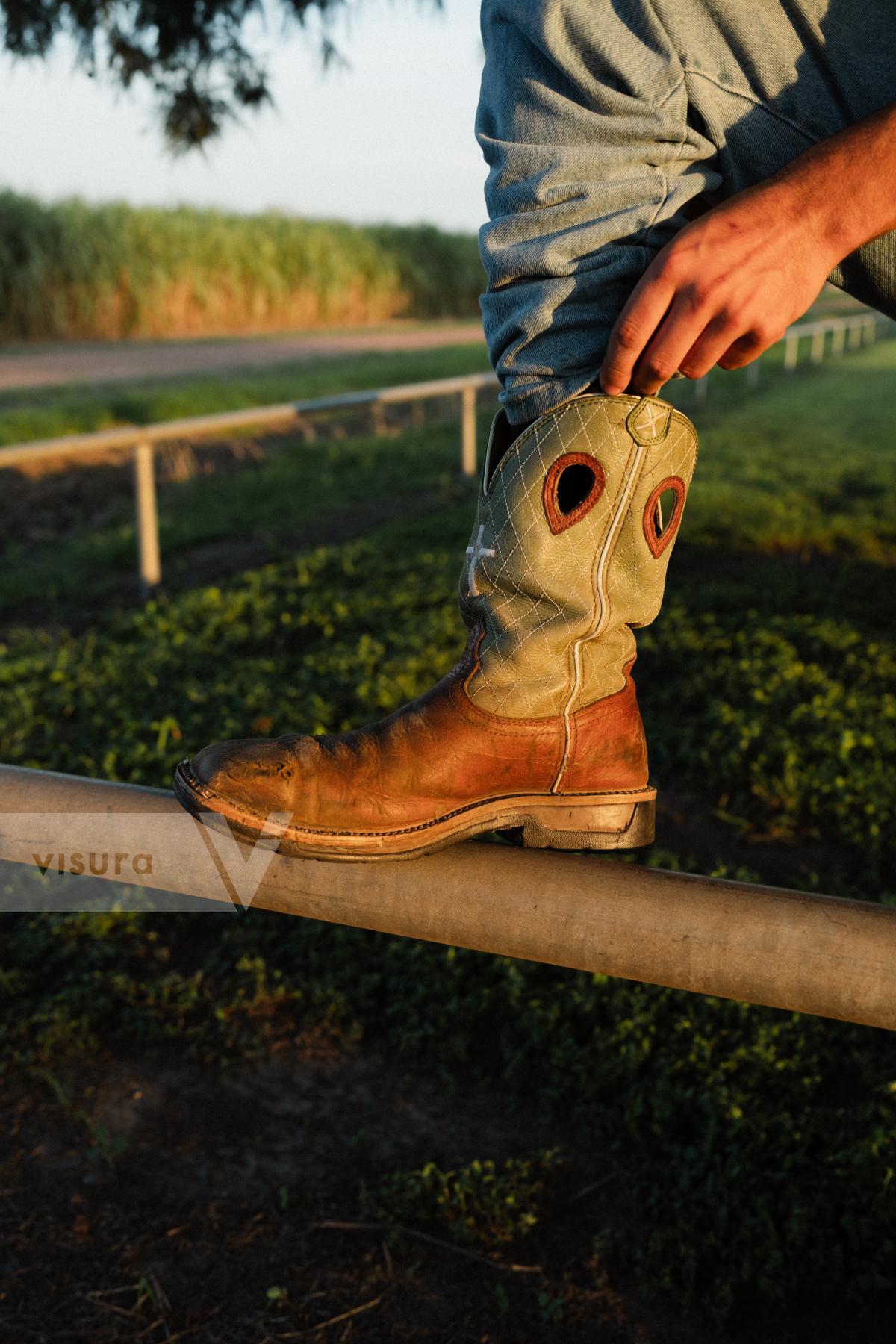
Close up on a local resident's boot. Gramercy United States

Nestled on the Marathon Petroleum Corp. refinery grounds is San Francisco, a 165-year-old plantation house. Marathon acquired this riverfront property in the mid-1970s, and until 2021, the estate warmly welcomed visitors on tours. Recognized for its historical significance, the house holds a prestigious place on the National Register of Historic Places. Originating from the 1850s, it was crafted by Edmond Bozonier Marmillion, and over the years, it changed hands among several owners, overseeing the operation of the adjacent land as a sugar plantation. In line with a broader movement, various plantation houses along the Mississippi River are now dedicated to providing visitors with a more comprehensive understanding of the lives and experiences of enslaved individuals. Garyville United States
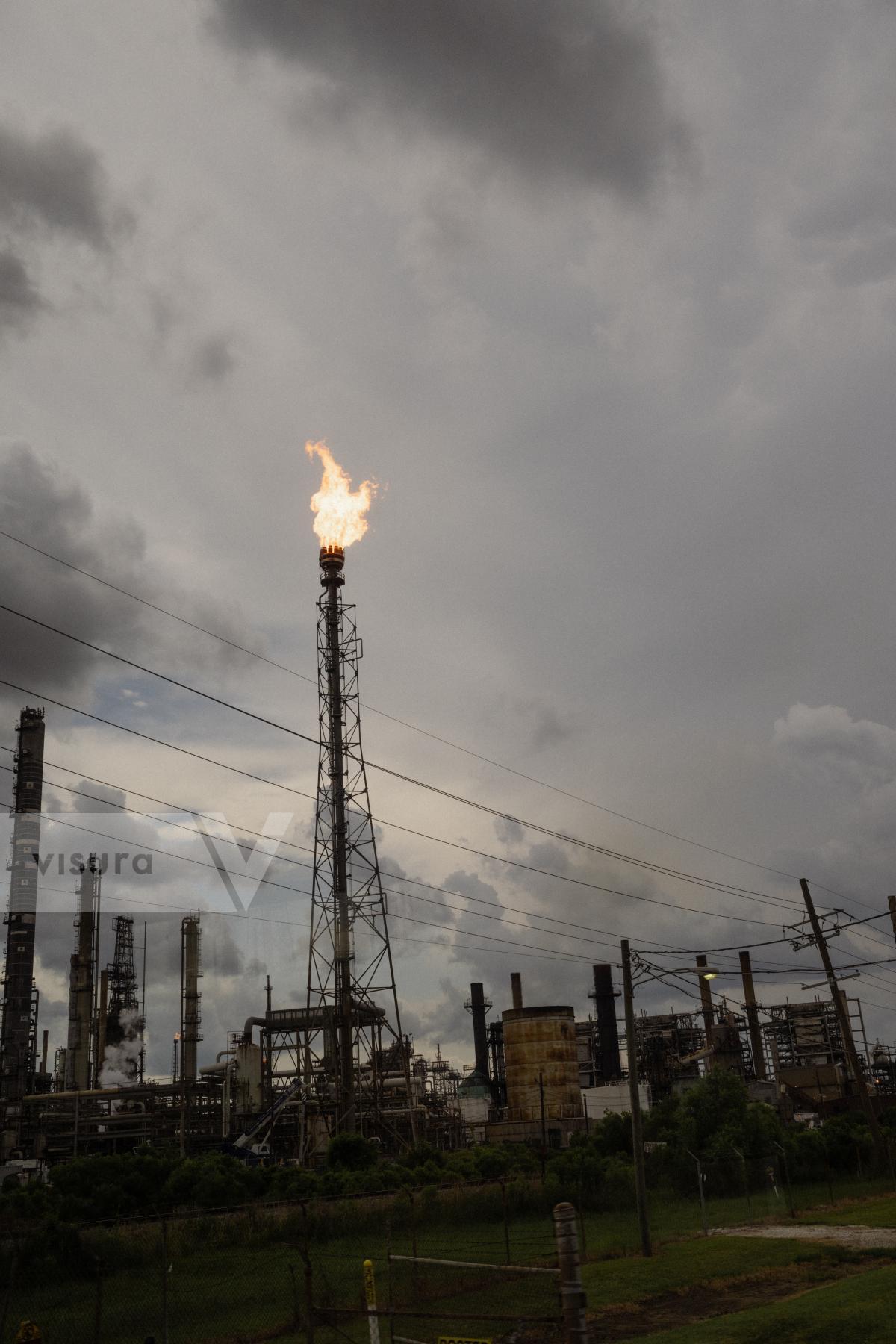
Gas flaring is the burning of the natural gas associated with oil extraction. The practice has persisted since the beginning of oil production over 160 years ago, due to a lack of appropriate regulation and political will. the amount of gas currently flared each year – about 140 billion cubic meters – could power the whole of sub-Saharan Africa. LaPlace United States
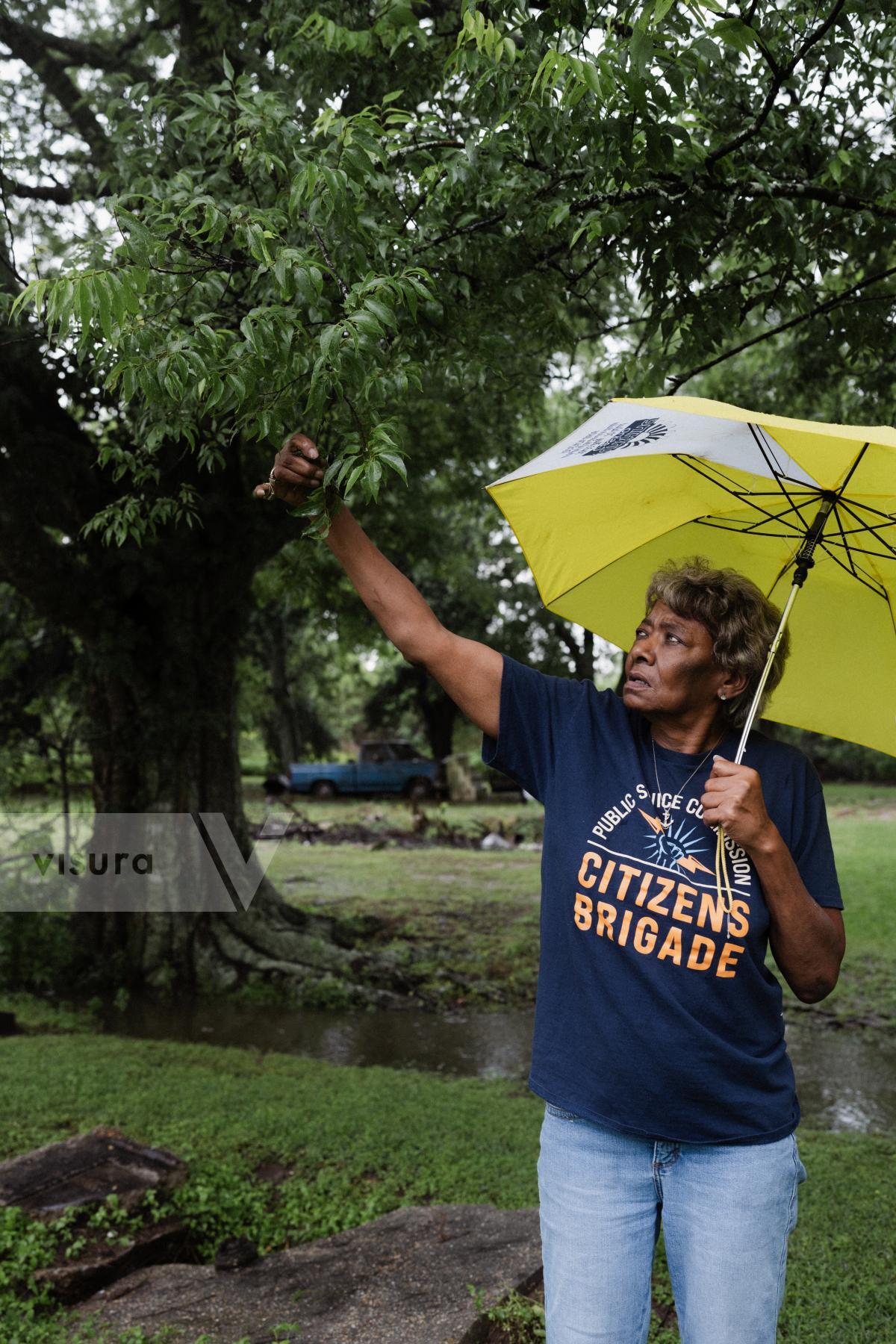
Janice is inspecting a sick tree near her house. Since chemical tanks have been built around the neighborhood, all the fruits and vegetable became unfit for human consumption. St James United States
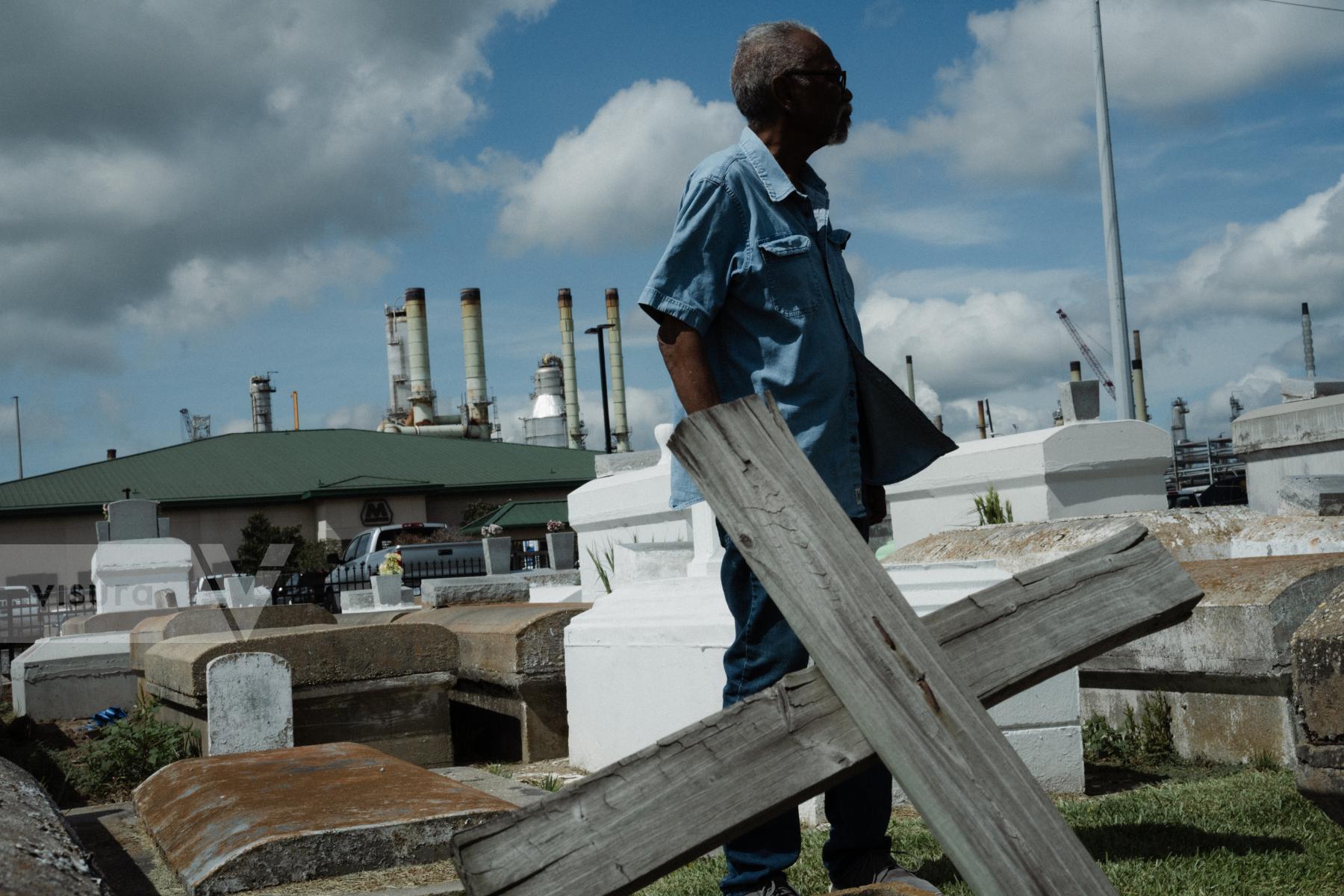
Bobby Taylor, founder of the Concerned Citizens of St. John, has his whole family buried in this cemetery. “The only reason why the cemetary’s still there is that you can’t buy a cemetary.” — Robert Bobby Taylor Reserve United States
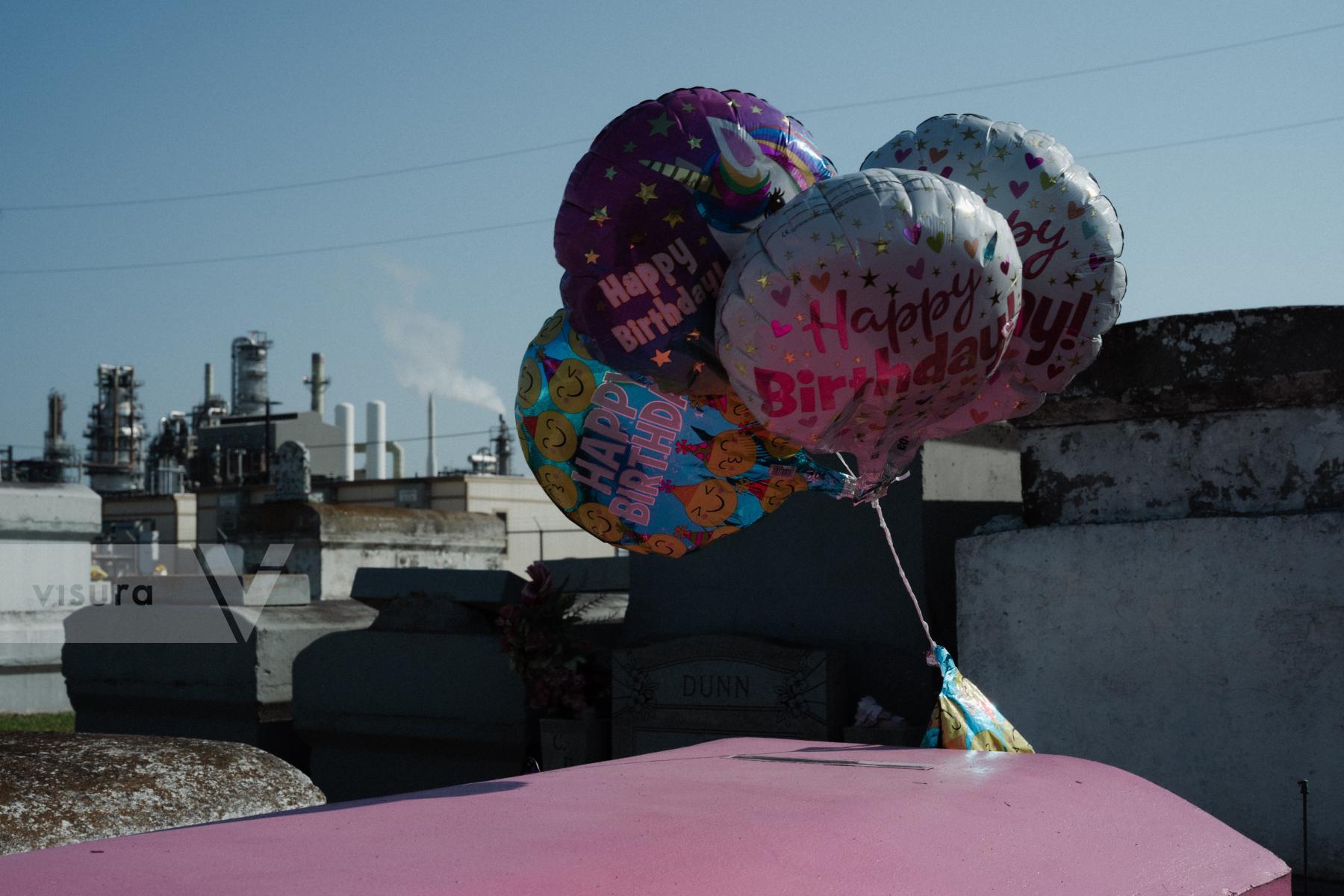
Marathon Refinery Plant totally surrounds the Zion Travelers Cemetery. A few years ago, visitors had to ask permission to access it. Reserve United States
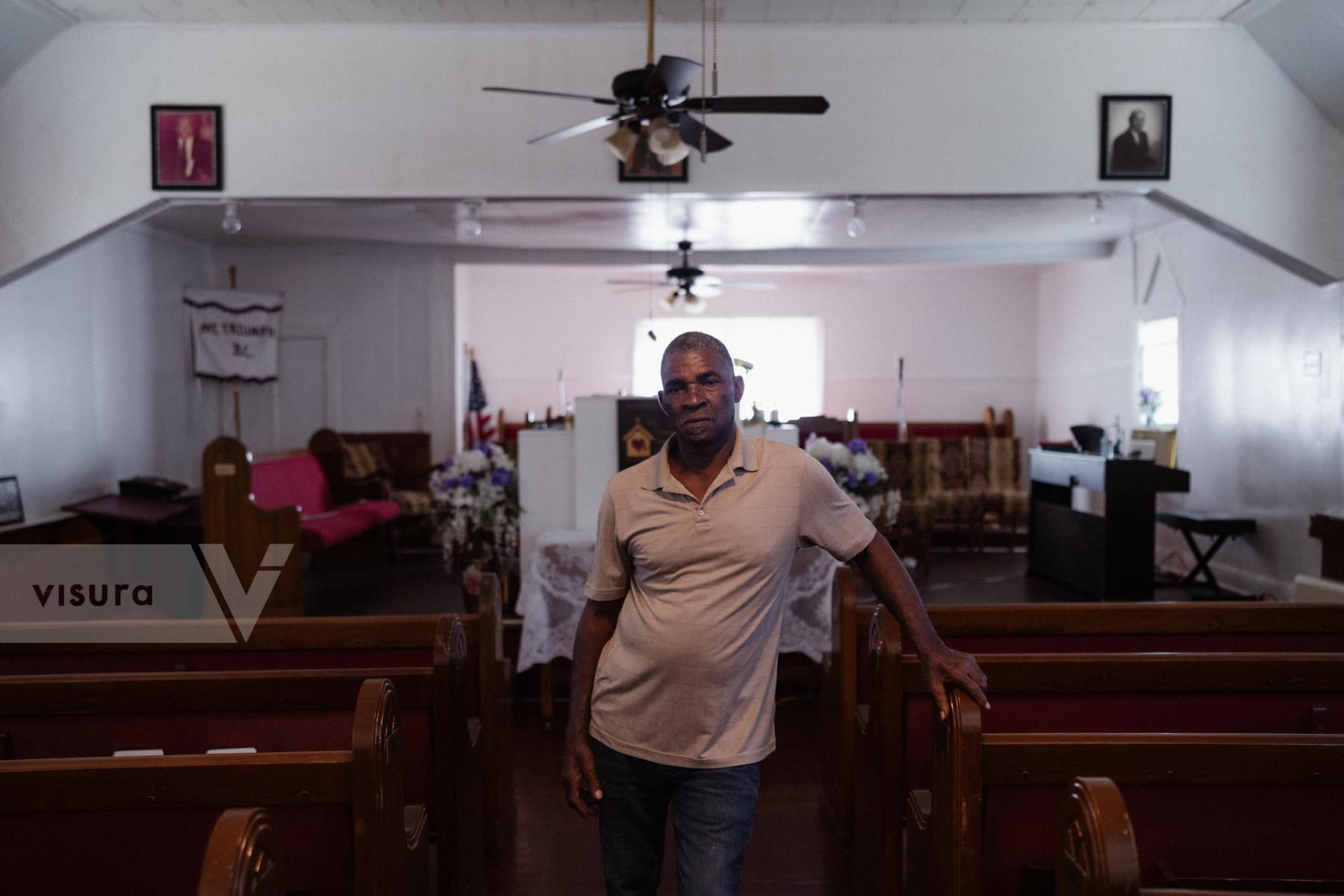
The pastor has been one of the first persons to fight the industries in St James, LA, before non-profits existed. Faith-based organizations are still the cornerstone of poor communities in the US. "Government is sold out to the industries. Things can hardly change." St James United States

On August, 25th, 2023, a massive column of smoke started to erupt from Marathon Petroleum refinery, in Garyville, LA. Garyville United States
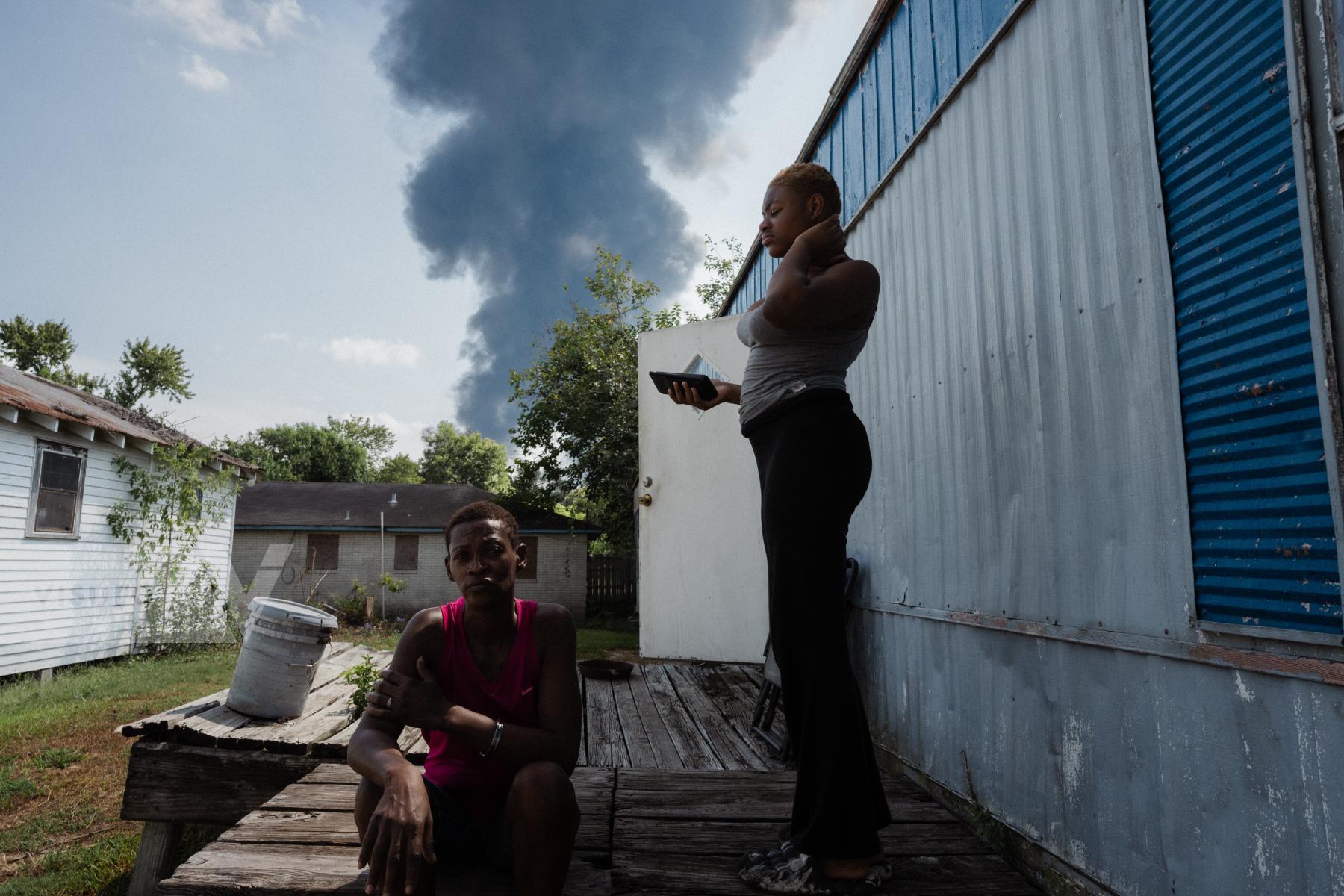
Sani is 13 years old and suffers from asthma and various respiratory issues. Me: “Why do you stay here, while the tank burns next to you?” Janae: “To go where? We ain’t nowhere to go.” Garyville United States
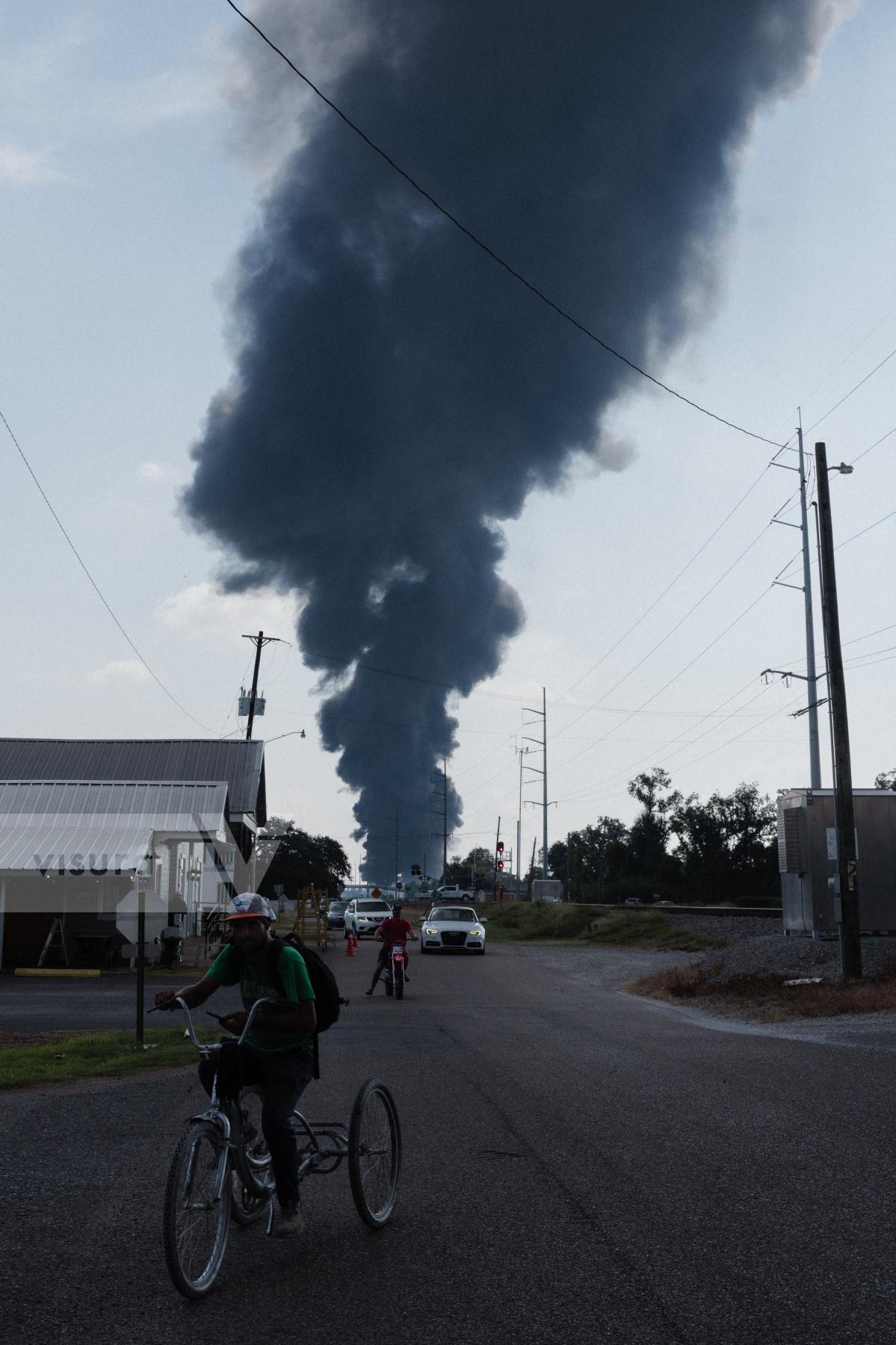
An evacuation order followed a leak of naphtha, a hazardous and highly flammable liquid hydrocarbon mixture. Garyville United States

Almost 9,000 people live withing two miles of the refinery. This type of incident happens several times a year and is exceptionally dangerous for those living around. “Sometimes, the smell is so bad, that you can’t stand it.” Garyville United States
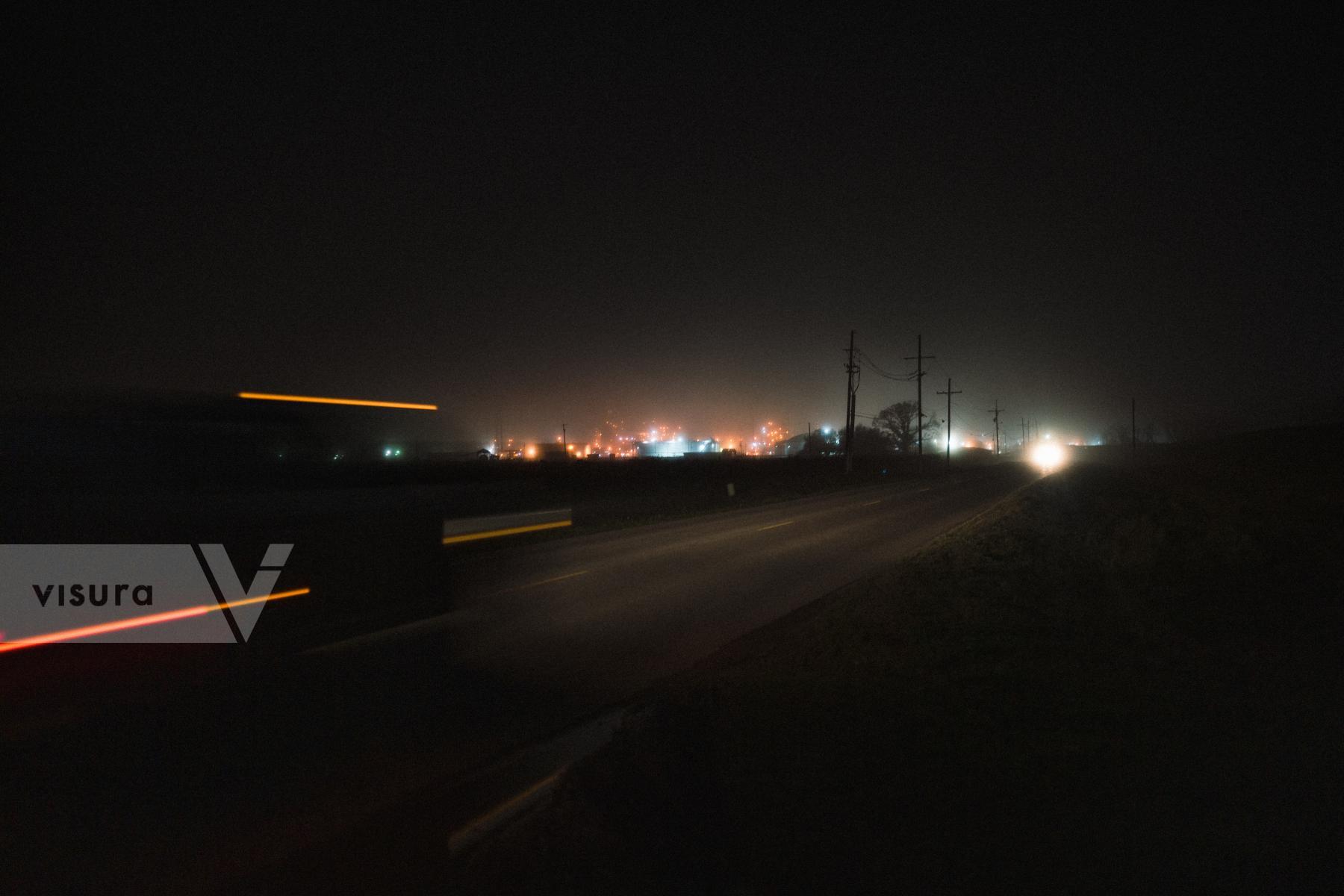
A plant seen by night. United States
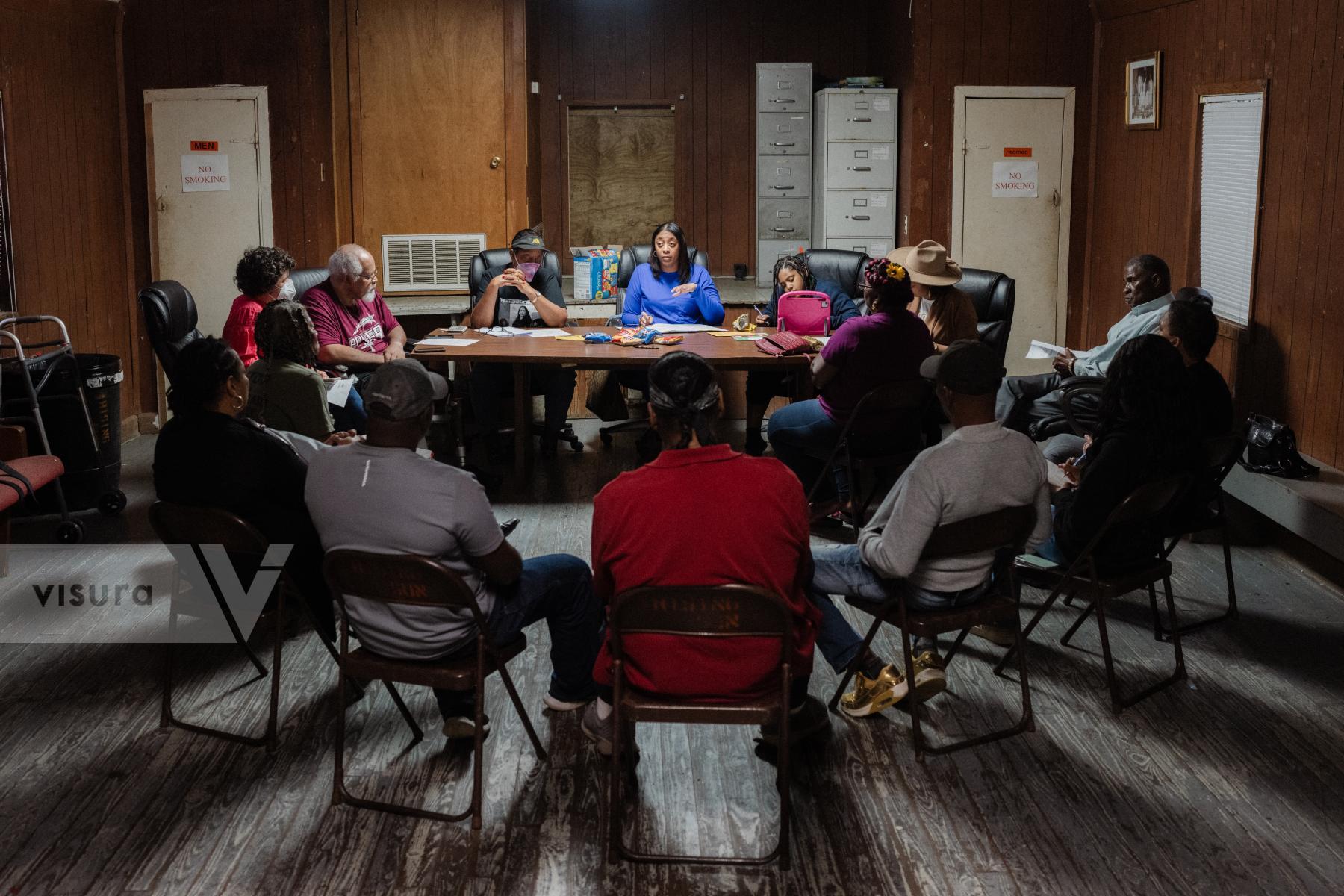
Rise St James, a grassroots non-profit, led by the activist Sharon Lavigne fights the petrochemical industries. A few months ago, they managed to halt the construction of Formosa Plastics, a $9.4B project composed of 14 plants in St James Parish. Various active non-profits also fight in the area. St James United States

Prayer before a meeting. Residents gather to talk about pollution in the area, and potential actions. Welcome United States

Like other residents, Nicolette has had stage 4 cancer. She had parts of her breast removed. “Our children have asthma, our elders have cancer.” United States
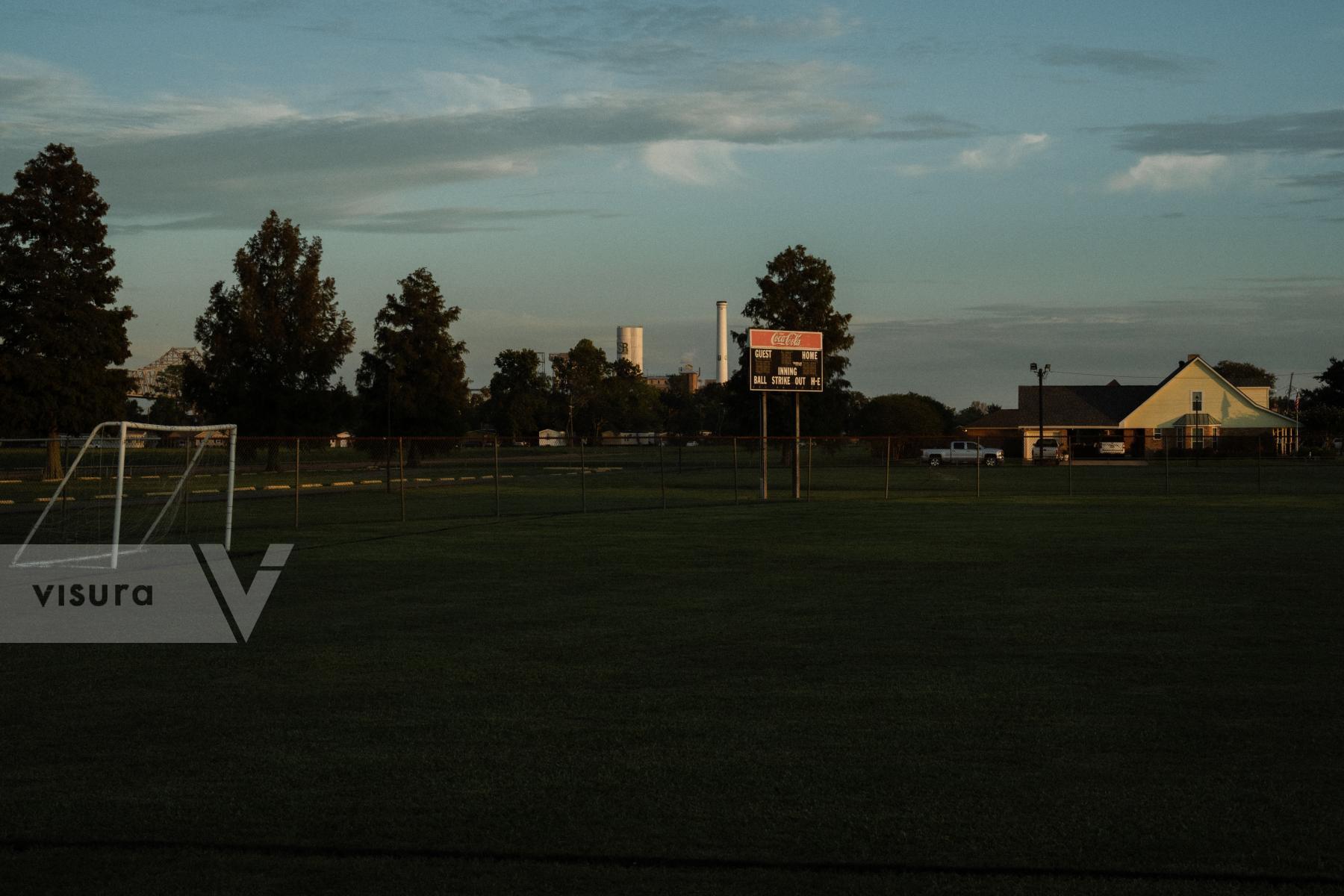
View of Louisiana Sugar Refining factory, from the park. Gramercy United States

Resident standing on the tracks of a freight train. Reserve United States














































